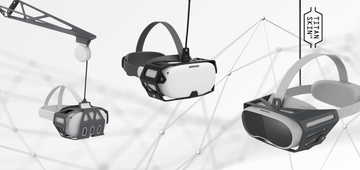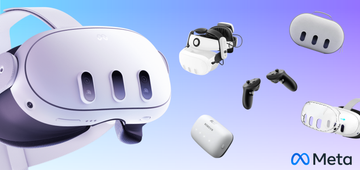Integrating VR into hospitals: the example of HypnoVR, which helps 100,000 patients in Europe
by Mariam Mdoreuli on Nov 17, 2025
Imagine walking into a hospital where patients undergoing painful procedures are transported to peaceful virtual beaches instead of staring at a cold, sterile ceiling. Imagine medical interns performing complex surgeries hundreds of times in perfect virtual replicas before ever touching a real patient. Imagine stroke victims regaining motor function through virtual reality games, making their rehabilitation less stressful and more fun.
This is already happening in medical centers around the world. HypnoVR has already helped over 100,000 individuals, and its solutions are used in over 400 clinics across Europe.

But here's the challenge: While the potential for XR in healthcare is enormous, many hospitals struggle to know where to start, how to implement these medical devices effectively, and what tangible results to expect. The technology is ready, but its successful integration requires careful planning, the right partnerships, and a clear understanding of where immersion can have the greatest impact.
Introduction to Virtual Reality in the Medical Sector
History of virtual reality in medicine
The medical industry has historically been slow to adopt new tools, but virtual reality is an exception. Unlike other medical innovations that require years of research and regulatory approval, immersive applications can often be implemented immediately, with measurable results. Medical facilities are discovering that the virtual reality headset is no longer just a nice-to-have gadget, but an essential tool for improving care, staff training, and operational efficiency.
The reason is simple: these devices address real-world problems in everyday hospital life. Patient anxiety during procedures, the high costs and risks of medical training, poor attendance in rehabilitation, and pain management are areas where traditional approaches have their limits. Immersive reality headsets offer effective solutions that are often more cost-effective than traditional methods.
Pain and Anxiety Management
One of the most immediate and measurable uses of VR in healthcare settings is in pain and anxiety management. When a patient is immersed in a virtual environment, their brain processes fewer noxious signals, providing natural, drug-free relief. This isn't just a theory: clinical studies consistently show a significant reduction in the levels of discomfort patients report during procedures.
For example, at Hoag Hospital , 20-minute VR sessions are being used in palliative care to help manage chronic pain and anxiety. Patients report feeling calmer, more in control, and less focused on their discomfort. For the hospital, this translates into fewer medications administered, shorter recovery times, and increased patient satisfaction.
The applications don't stop there: reducing pre-operative anxiety, reducing nausea linked to chemotherapy, alleviating claustrophobia during an MRI... Young patients particularly benefit from the distractions offered by this virtual environment during blood tests or wound care, making medical experiences less traumatic.
Main applications of VR in hospitals
Virtual Reality Rehabilitation and Therapy
Physical and cognitive rehabilitation is another area where virtual experience is showing powerful impact. Individuals who have suffered a stroke can exercise in virtual environments adapted to their current abilities. The immersive nature of virtual reality makes sessions more engaging, improving attendance and speeding recovery.
The effectiveness of this immersive universe in rehabilitation comes from its precision and progressiveness: virtual environments adjust according to the patient's progress, something difficult to achieve in traditional physical therapy. After orthopedic surgery, movements can be practiced virtually, safely, before being reproduced in the real world.
The technology also enables remote rehabilitation, allowing patients to continue their exercises from home while remaining connected to their caregivers. This is a major advancement for patients who live far from specialized centers or have difficulty getting around.
Medical training and simulation
Medical training has long relied on textbooks, dissections, and, eventually, real patients for hands-on learning. Virtual experience is changing that by offering endless training opportunities with zero risk to patients. Osso VR , a surgical training and assessment platform, offers one of the largest libraries of virtual reality medical training.

Students can now practice hundreds of times before moving on to real-life practice. They can explore rare cases, simulate emergencies, and develop muscle memory for complex procedures. Learning becomes experiential, improving knowledge retention and confidence for future physicians.
Virtual reality training ensures the same quality of instruction for every student, regardless of their learning location or instructor. This is a major advantage for rare cases or emergency situations that students would not always encounter during clinical placements.
Virtual immersion also allows for objective assessment: tracking of movements, decision speed, precision of gestures... all indicators that provide detailed feedback to progress more effectively than with simple observation.

The Future of XR in Hospitals
The integration of virtual reality is still in its infancy. The future will see the arrival of more sophisticated applications, combining AI, personalized therapies, and haptic feedback simulating touch. The market for augmented reality in healthcare is growing rapidly, and centers that start today will be better prepared for this transformation.
So the question is no longer “Will virtual reality become an integral part of hospitals ?” but “How quickly can we adopt it effectively?” The technology is ready – the question is whether your facilities are ready to embrace the future of healthcare.




